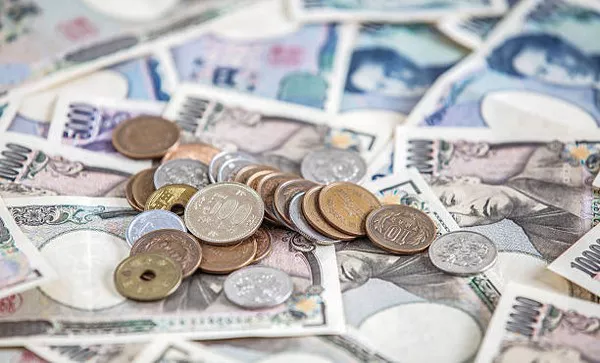The Japanese yen has extended its prolonged weakness into May 2025, hovering near multi-decade lows against the U.S. dollar as the Bank of Japan (BOJ) continues its cautious approach to monetary policy normalization. Despite mounting inflationary pressures and growing criticism from international counterparts, Japan’s central bank has opted to maintain its ultra-loose monetary stance at its May policy meeting, keeping its short-term interest rate target at -0.1% and the 10-year government bond yield cap at 0.5%. This decision comes as other major central banks, particularly the U.S. Federal Reserve, maintain significantly higher interest rates, creating a widening policy divergence that continues to weigh heavily on the yen.
Market participants had been cautiously optimistic that the BOJ might signal a more hawkish tilt following Japan’s April inflation data, which showed core consumer prices rising at an annual rate of 3.2% – well above the central bank’s 2% target. However, BOJ Governor Kazuo Ueda reiterated the bank’s view that current inflationary pressures remain unsustainable, citing weak wage growth and softening domestic demand as key concerns. “While we acknowledge the persistence of price increases, we do not yet see sufficient evidence of a virtuous cycle between wages and prices that would justify policy normalization,” Ueda stated during the post-meeting press conference. This dovish stance has disappointed yen bulls, sending the USD/JPY pair briefly above the psychologically significant 160 level before suspected intervention by Japanese authorities brought it back to the 157-158 range.
The yen’s weakness has become increasingly problematic for Japan’s economy, particularly in terms of import costs and living standards. Japan’s trade balance for April showed a larger-than-expected deficit of ¥1.2 trillion as the weak yen continued to inflate the cost of energy and food imports. Petroleum imports alone were up 28% year-over-year in yen terms despite relatively stable global oil prices, highlighting the currency’s impact on resource-poor Japan. Consumer sentiment has deteriorated accordingly, with May’s preliminary household confidence index falling to its lowest level since November 2023. Small and medium-sized enterprises, which rely heavily on imported materials, have been particularly vocal about their struggles, with many reporting profit margins at their thinnest in decades.
International pressure on Japan to address the yen’s weakness has intensified in recent weeks. U.S. Treasury Secretary Janet Yellen made unusually direct comments about the yen’s volatility during the recent G7 finance ministers’ meeting, stating that “excessive, disorderly movements in exchange rates could undermine economic stability.” While she stopped short of accusing Japan of currency manipulation, her remarks were widely interpreted as a warning against excessive intervention. Chinese officials have been more blunt, with Commerce Ministry representatives suggesting that Japan’s weak yen policy amounts to “competitive devaluation” that harms regional trade partners. These tensions are expected to feature prominently at the upcoming G20 summit in June, where global imbalances and currency policies will be high on the agenda.
Looking ahead, market attention will focus on two key developments: Japan’s spring wage negotiations and the Federal Reserve’s policy path. Early results from this year’s shunto wage talks suggest base pay increases averaging around 3.8%, slightly higher than last year’s 3.6% but still below what the BOJ considers necessary for sustainable inflation. If final figures due in late May show stronger momentum, it could prompt the BOJ to reconsider its stance at its June meeting. Meanwhile, the Fed’s continued hawkish rhetoric has kept U.S. Treasury yields elevated, maintaining pressure on the yen. With markets now pricing in only one Fed rate cut for 2025 (down from three expected at the start of the year), the interest rate differential looks set to remain a persistent headwind for Japan’s currency.
You Might Be Interested In:
- How to Invest If the U.S. Dollar Loses Might?
- Top 6 Investments to Capitalize on the Strong Dollar in…
- Fluctuating Value of the U.S. Dollar: What It Means for…


